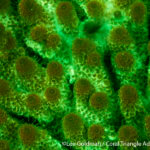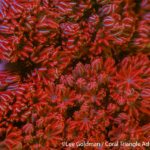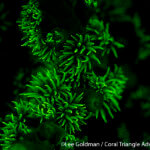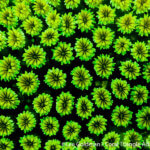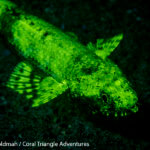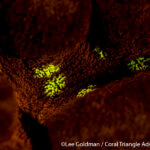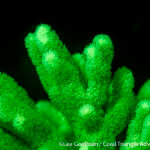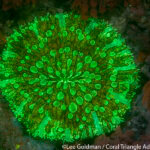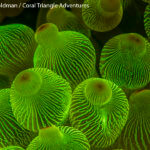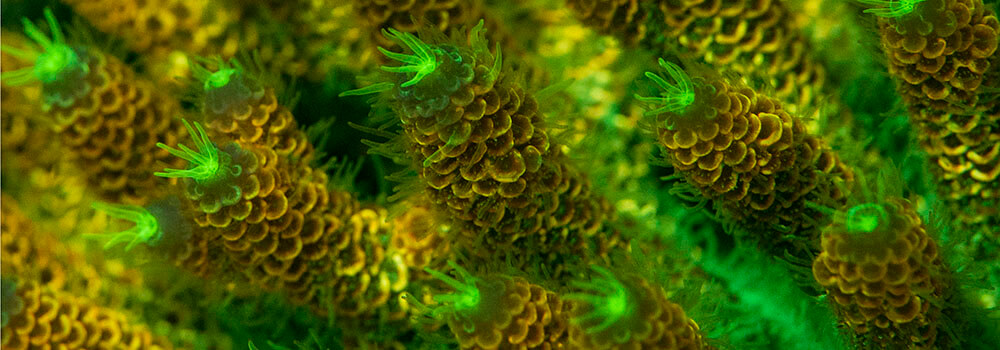
Snorkeling to see fluorescence
Simply put, fluorescence is the ability to absorb light of shortwave lengths and emit it at longer ones. In nature there are many animals and minerals that show this property, though we rarely see the outcome given the longer wavelengths are usually outside of the visible spectrum. Though our eyes cannot detect it, cameras can capture fluorescence with special filters that are attached to both the strobe light and the camera lens. The filter on the strobe, called the excitation filter, flashes a wavelength of light that forces the electrons in the color pigment cells to jump up several levels The filter on the lens, called the barrier filter, blocks out most incoming light except for the fluorescent light emitted from the subject.
The color most often emitted during my night sessions with the filter was green. And to some degree this makes sense. At least for corals, it has been suggested that since plankton, their primary food item, are attracted to green wavelengths, the green light would act as an attractant, drawing plankton close to their polyps where they can capture and consume them. Of course, these are all speculations as we really don’t know what the colors are used for, or anything at all as the fluorescing may just be a by-product of other biological functions.
- Acropora humulis
- Xenia
- Tubastraea
- Galaxea
- Lizardfish
- Lobophyillia
- Hard coral
- Sinularia
- Fungid coral
- Entacmea quadricolor
What a treat it was to capture this amazing phenomenon. We cannot wait to bring our filters to Palau to see what interesting and beautiful organisms fluoresce!

